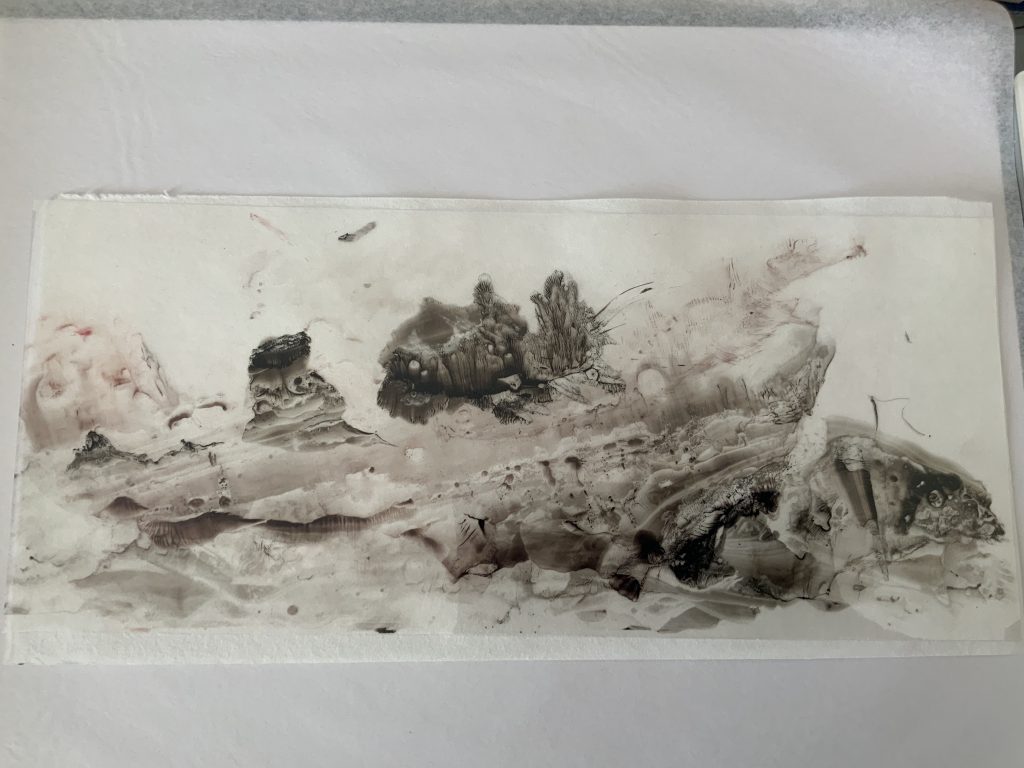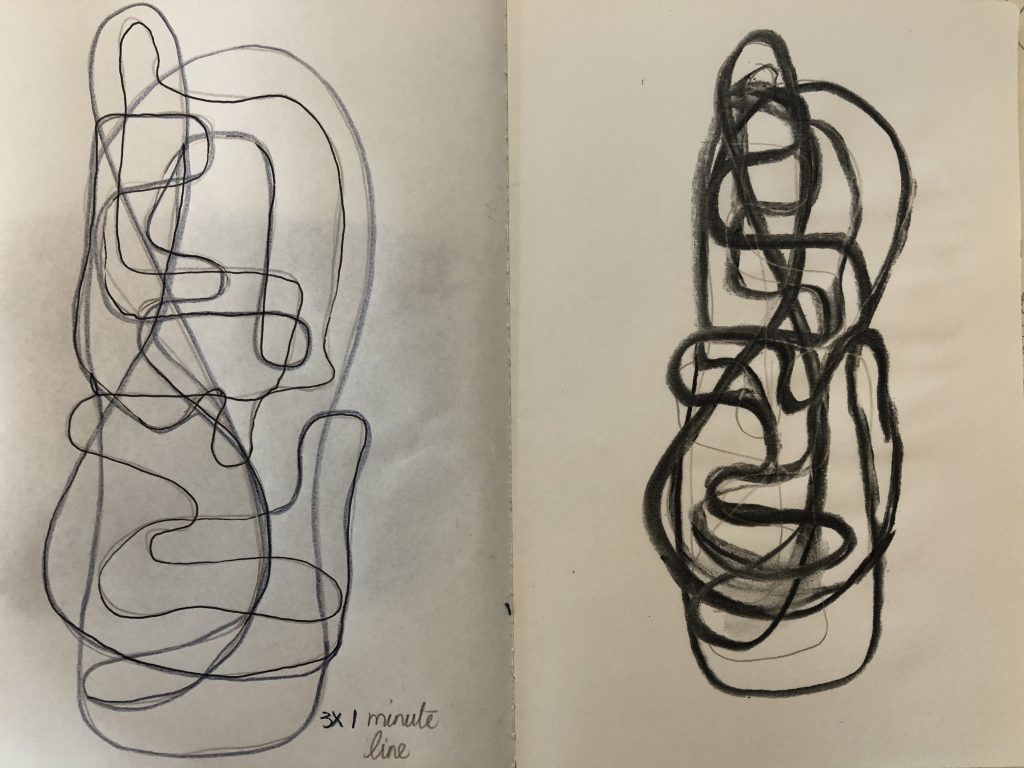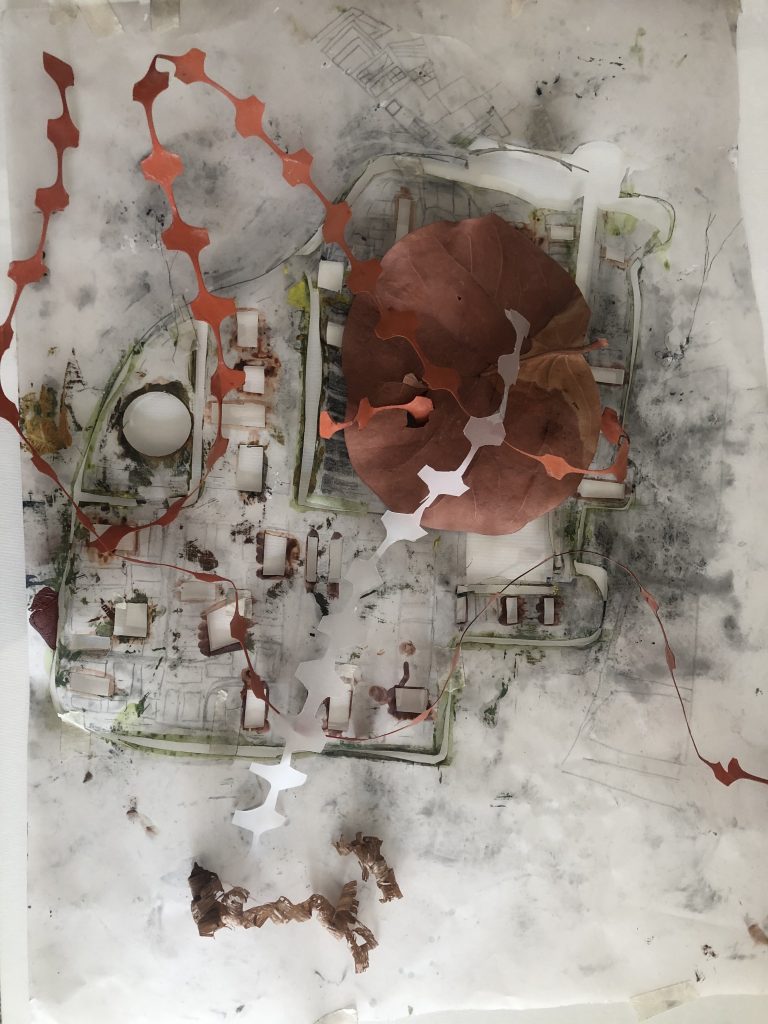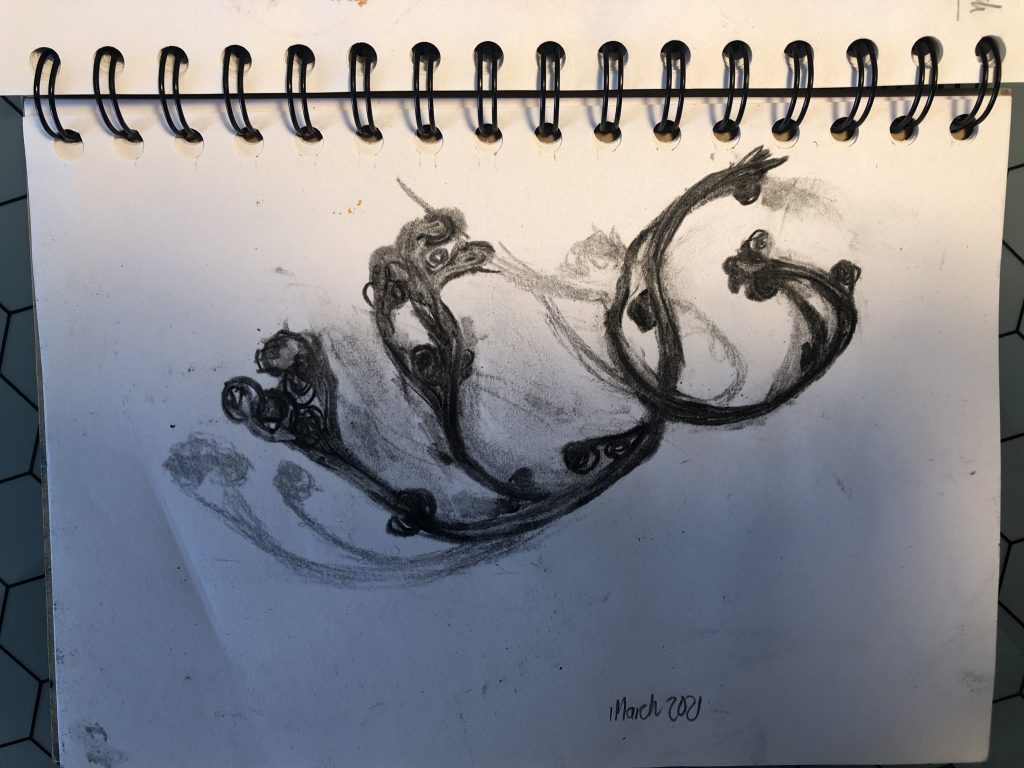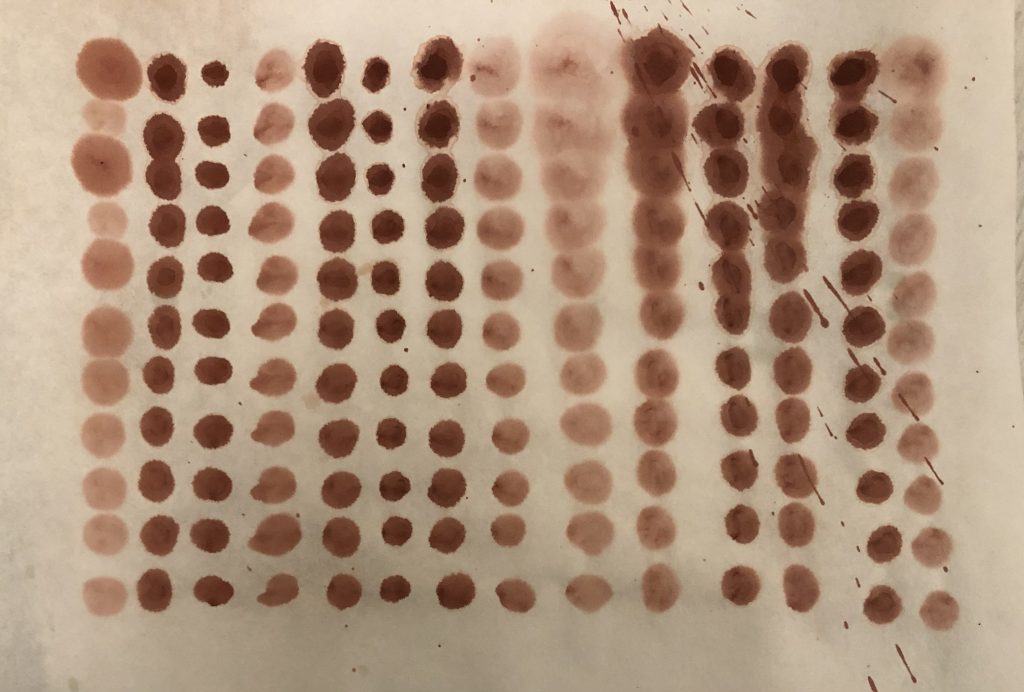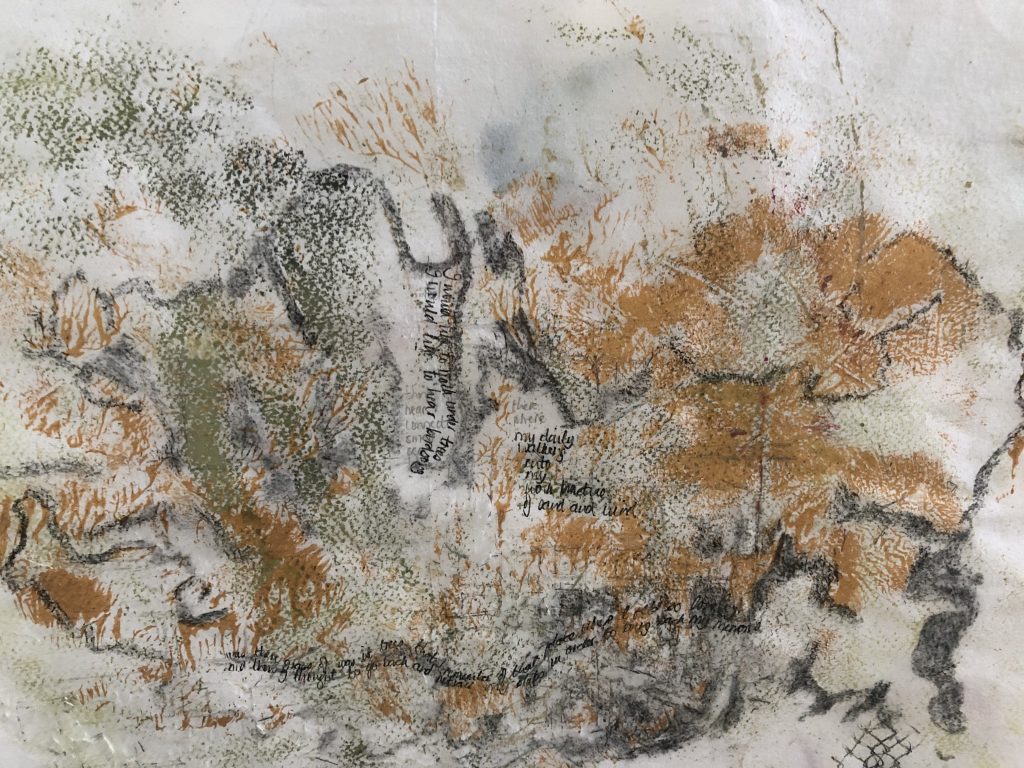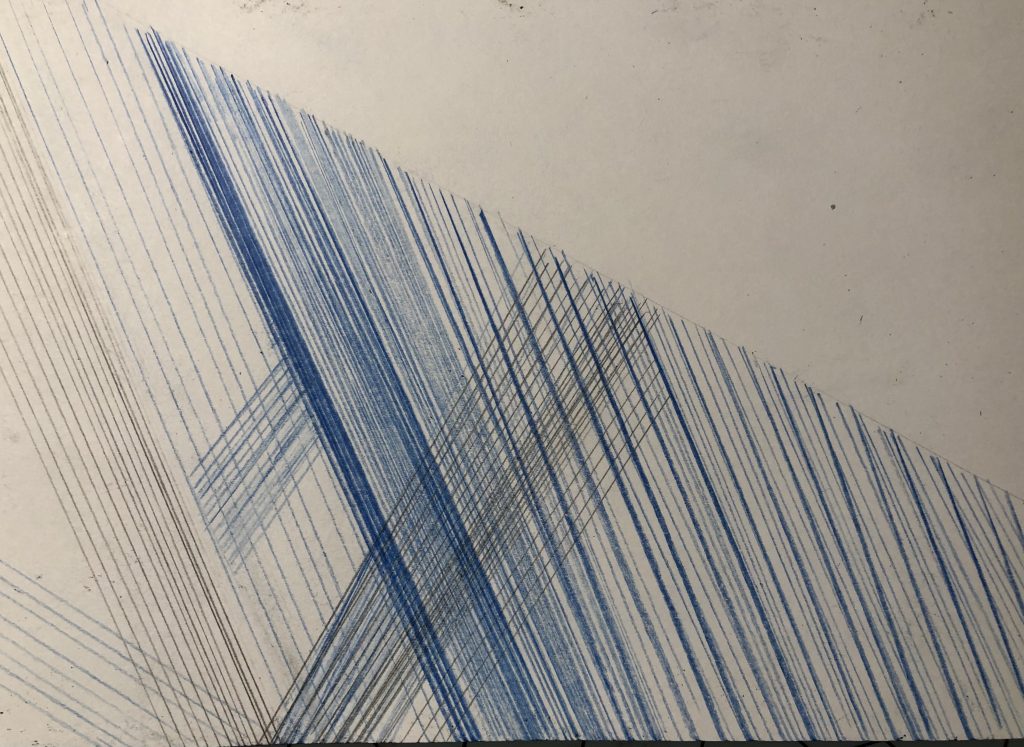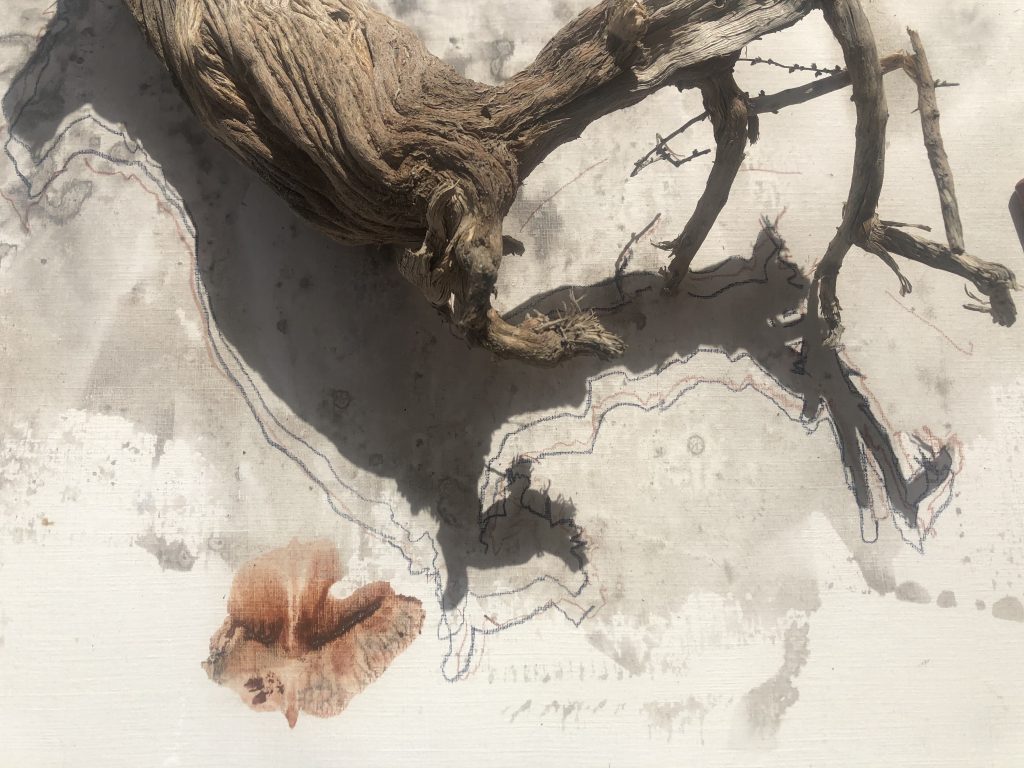The first draft for my tutor was shared on 23 and 26 April, after which changes to the writing style as well a discussion around key thinkers/theories I considered as well as how to introduce my question, was suggested.
Final document was presented on 28 April 2021 and contains 2552 words, which exclude the references and illustration list.
INTRODUCTION:
It is the intention that this Critical Review will allude to how daily walking contributed to link theoretical studies with a studio practice. Walking is mostly done in my immediate surroundings as a daily ritual. I prefer to walk alone and follow routes in an explorative nonplanned way. I use a GPS walking app to log my walks. Here I can post photos and make short notes about a walk – weather conditions and my own thoughts.
By investigating other artists’ and my own walking practice I believe I found a relationship between walking and thinking and perceiving place.
Not knowing had to become my understanding of making as I attempted to respond to a landscape/place, rather than drawing or painting a landscape. A choice to focus on intuitive making processes and daily drawing routine contributed to making a body of work. This project was presenting itself difficult at times in attempts to make explanations with regards to a verbal validation around how a work developed. By walking daily in the area where I live or find myself at that moment, questions developed, like
- why when walking, one wander easily into ideas of cultural and political history of place?
- why memories of place and landscape occupy a search for meaning?
New Materialism philosophy challenged my beliefs about existence as well as an attitude toward matter and things not living. By considering energy as reality matter itself, it opened materiality as lively, which not necessarily had to measure up to language. In his research, B Piciotto (2019), when he looks into hiking in his doctoral thesis, writes: “New Materialism philosophy informed by AlfredNorth Whitehead, Donna Harraway and Bruno Latour argues that all things from a puff of clouds, to wooden trails and human bodies, exist in flux…”.
EXPLORING WALKING AND MAKING
Explorative making of imprints, cut-outs, and embodied drawing with ink around tracing and mapping was critical in developing a relationship between the theoretical studies and making a body of work. (See examples of work in figures 1-9 below) These works underly the reading around representational art and where I explored material qualities and work emerged. How the materials behaved played a major role in the outcome, as well as the choice of materials used. Walking is never planned in terms of how long, how fast/slow, or where – I focus on the experience of doing and that which follows. I resisted representations and hoped to stay in a place of flux when working in my studio. In my practice walking was becoming a place and experience where things and thinking could be considered – a human body is in motion or a mode of flux.
I view my daily GPS maps as documents of place and attempted to trace these maps through line and mark making, cutouts, and own mapmaking (mostly not real). In later works, the use of sound and the voices of others, whilst walking, brought these ideas to the front in my practice. Below is a video assemblage reflecting on walking as part of my thinking process and which I consider developing as part of places I passed through. I have recently relocated back to South Africa.
Looking to a lived experience became an important part of the creative process – explaining how I observe my walking, whilst at the same time living it. Linking thinking and making to walking touched on this lived experience back in the studio. Work is shared regularly on a social media platform, Instagram, and the sharing experience with other artists is another way of feeling connected and grounded in my practice. Asking friends to participate in sharing their walking experiences with me helped me make sense of walking and understand the effect it has on others. These were presented as videos and sound recordings in the PP blogs.
It seemed a continuous battle to explain theory through work – by the third part of the course it was evident that making was not sufficient – the theoretical framework was too a separate investigation. I gained insight into my own thoughts of how ‘scattered’ I can become when consumed in a research process – doing and thinking about many things at a time. A commitment to a daily practice was effective to re-connect drawing as well as experiencing a repetitive act of making and thinking. The activities became attempts or interventions to prevent a binary relationship between practice and theory. It was also encouraged by tutoring. Reference to Love, who asserted that a binary operates in art schools was considered.(Love, 2005) Viewing my practice as an integral part of the theoretical investigation contributed towards looking critically at the experience of art. This supports Love’s theory that art is in itself a form of criticism (Love, 2005,157).
When considering materiality the ideas of Giles Deleuze and Felix Guattari (touched upon during UVC1) around their Rhizome thinking, was revisited for a deepened understanding of connectedness and experience. A rhizome is taken from botany, with a root system which grows horizontally across, alongside, and as part of other matter — brought an understanding of the multiplicity of any becoming (things, plants, animals, humans). It is seen as an ontology of all things. Materiality was mostly seen by emphasizing humanness over thingness. When I look at the materiality of things, as discussed in the course, I see these connections, networks, or assemblages present in how we talk and think about the art-making process. It became clear that artists many times would share how their thinking emerge when they are making. In her questions around practice artist Philida Barlow said the following: ‘It takes time, “it” being a kind of recognition of ease between myself and the proposed work, or the debris of try-outs, results of the desperate need to engage with physical stuff, without any clear idea of what to do.’ (Barlow, 2004:83 as taken from UVC 2 study material)
DID WALKING BECOME CENTRAL TO MY PRACTICE?
Developing my research, the work of Doreen Massey around temporality and dynamism of place, added a deeper layer to an understanding of place. (Massey, 1994) When considering walking a landscape – I am learning that it is a space filled with history and memories, as well as being a dimension of multiplicity and very definitely dynamic. Massey challenged assumptions about space by indicating the importance of understanding the links of power. She questions the overwhelming focus on time as temporality and dynamism, and of space as devoid of dynamism, temporality, and time. In her book, For Space, she suggests recognition of space as the “product of interrelations, as well as to understand space as the sphere of the possibility of the existence of multiplicity and to recognise space as always under construction.” (Massey; 2005, 10)
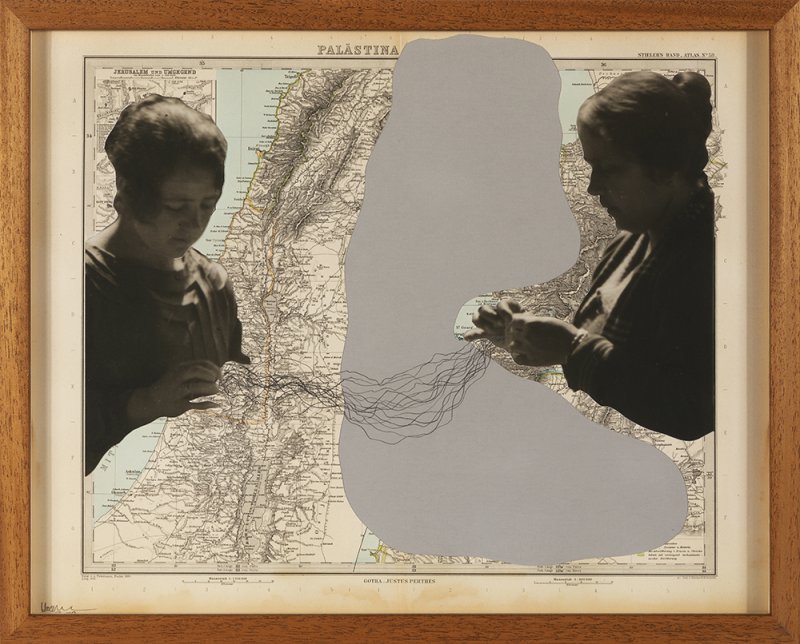
It became my understanding that these spatial assumptions are to be challenged: Massey discussed how assumptions around space and society were established by maps showing divisions between cultures which were formed by separation based on cohesion and difference. By visiting Palestinian artist, Hazem Harb,(see figure 10 and11) who in his works asks a viewer to take a deeper look to understand the many layers of oppression, ideas were developed as questions about what is a sense of home, considering the affect of memories on place, as well as feeling the plight of ‘ the other’ came to the front. This artist’s work is mostly about about displacement, historically and orally researched. Moving bodies in practices of social change and social justice could not be overlooked as I considered mobility, meaning in situations of colonialism, displacement of people due to wars and geographical incidents, immigrant rights and women’s rights movement during the course.
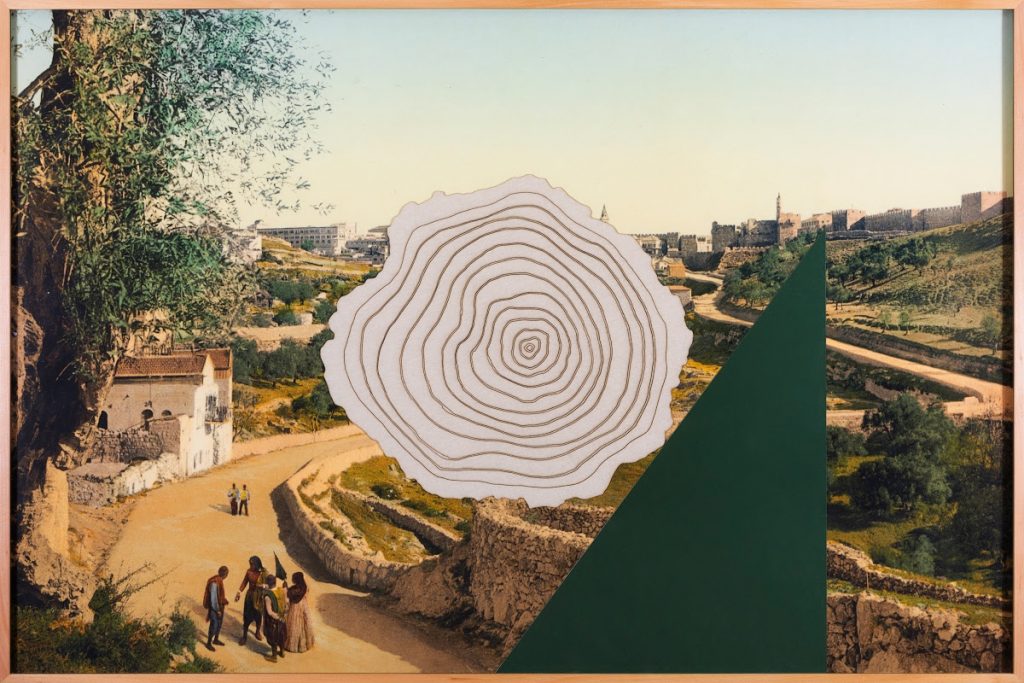
Figure 11: Hazem Harb, Map of land, Series #04 (2019). Pencil on collage on original Palestinian map pre-1948. 50 x 70 cm. Courtesy of the artist.
In my making process, I became an onlooker and worked and explored drawings with/behind fences.
Below are two works I did prior to the drawing I titled Gazing at. I show these as a comparison to how I reacted and thought about place and figure when I would work in my studio.
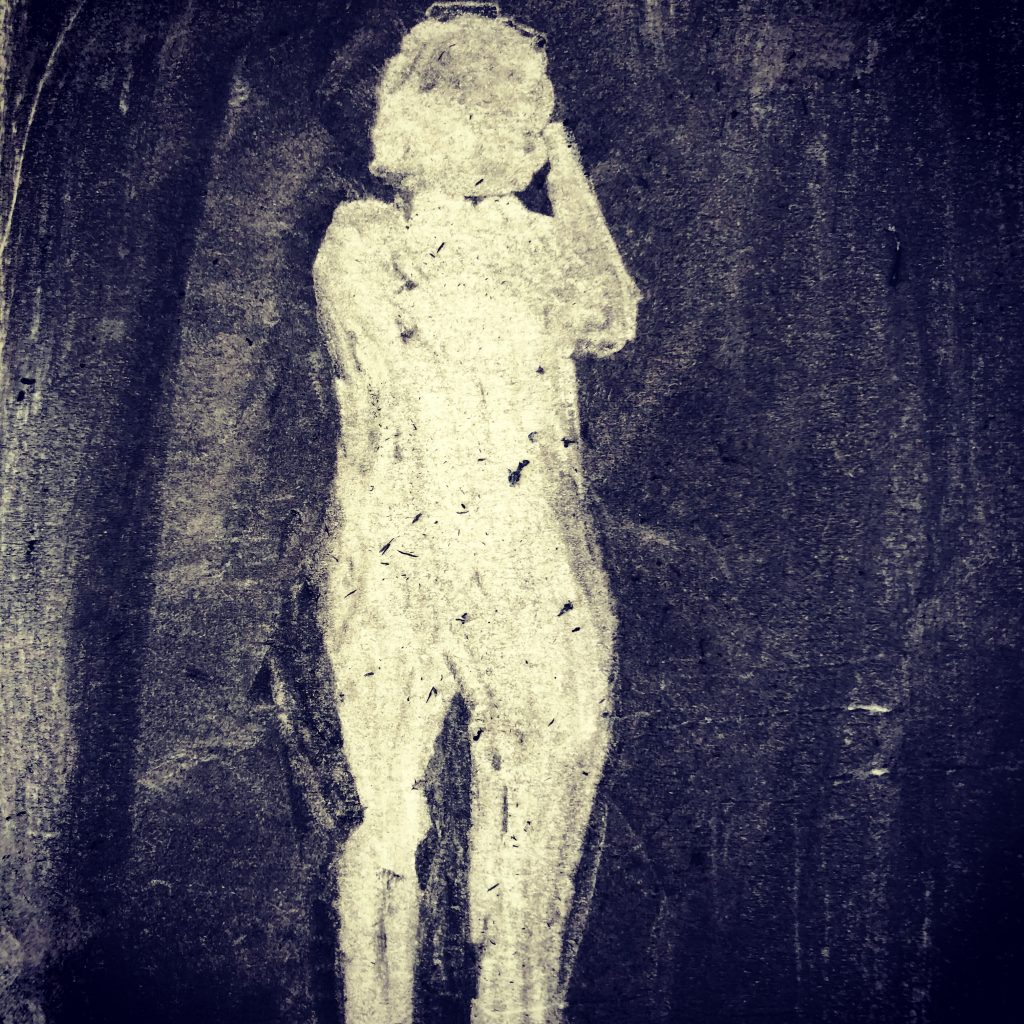
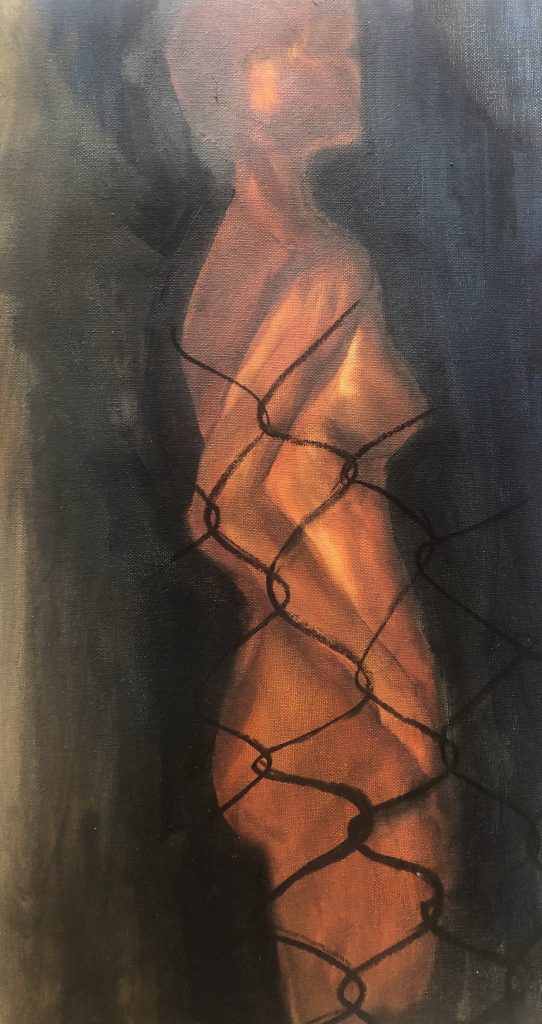
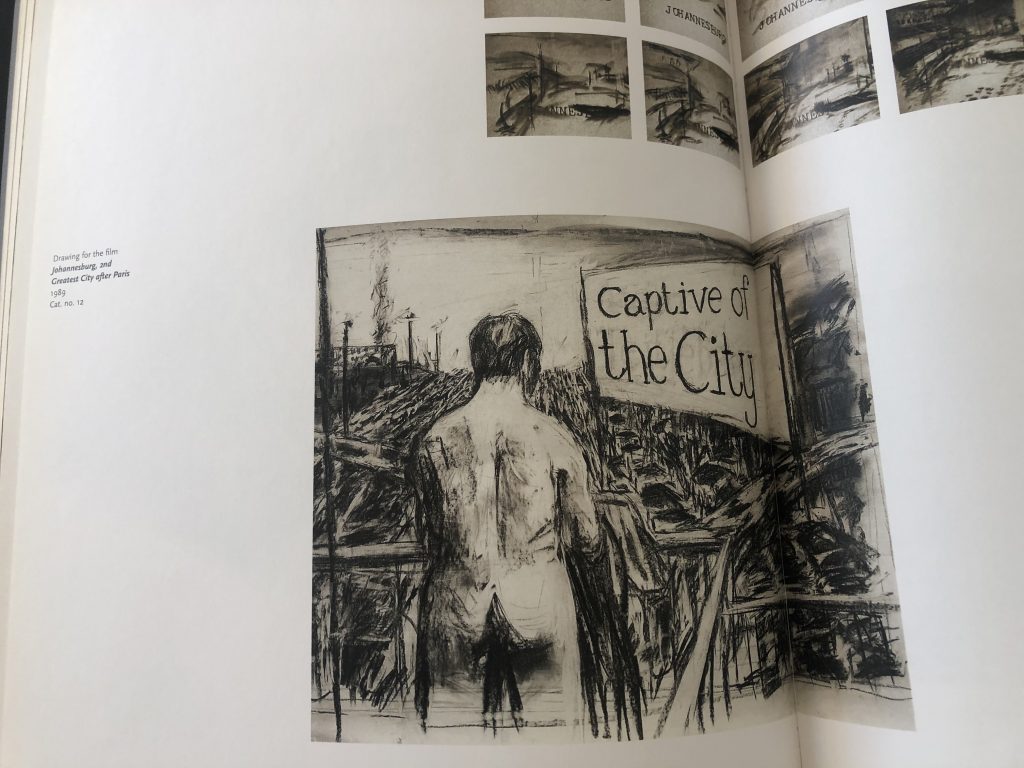
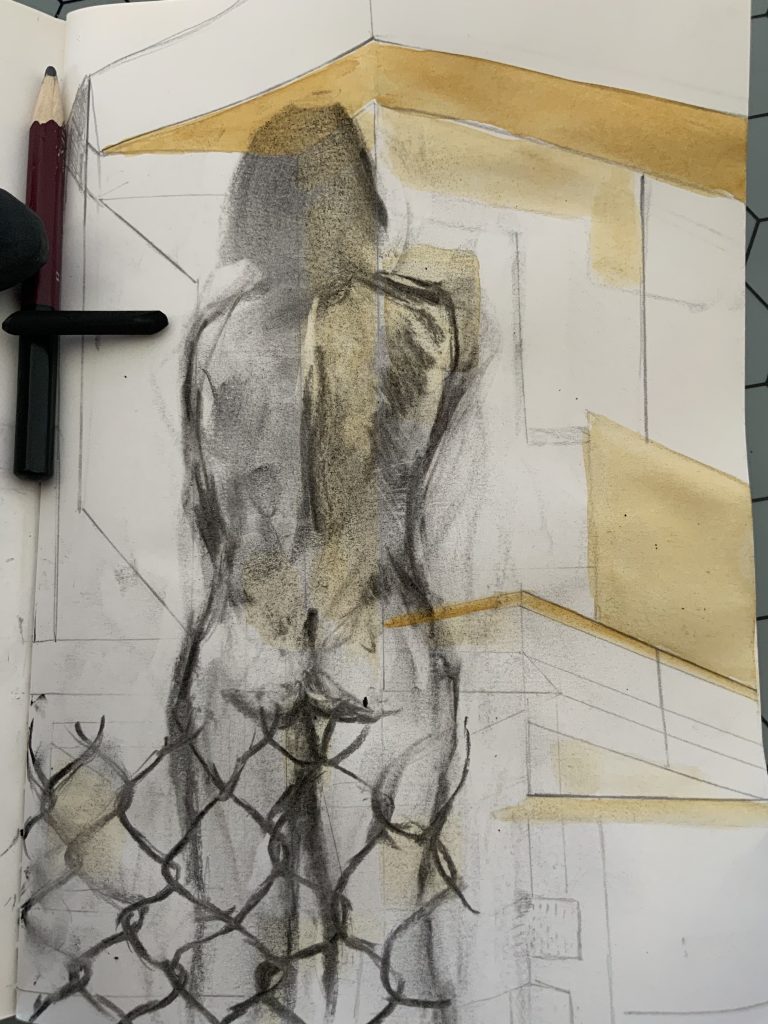
Gazing at….Karen Stander, January 2021
In my PP I wrote the following about the above drawing, titled Gazing at: “I think I appropriated Kentridge in my daily walk, but it opened my eyes to forms around me – the formality of a living space we create for our lives – architectural ideas of modernity and city living within the Arabic culture. I see so many conflicts due to difference, but also the need to have a safe place which protects from the harsh heat and winds, as well as moving away from traditional living which was in tents and later into square blocks interviewing into communities. I am also aware that I have a need to react to this space around me – walking in this way helps to think and transform me – I am influenced by what happens around and within me. “ Kentridge was using irony as he looked over Johannesburg in this work in figure 12. One cannot but forget that most western societies were once built on similarly inhumane principles that SA faced during Apartheid and colonialism. Here are multiple layers of complicity and responsibility in this work.
Artist Phylidda Barlow (Study guide for UVC2:70)alluded to meaning and language by an opinion around art writing on understanding, referring to a ‘trade-in” for the direct experience was something to consider. I agree that we need the qualities of touching, the tactile when experiencing art- to come to the front as part of a personal experience. As an artist, this experience happens in the making and use of materiality, as a viewer it lies in being around or in the work. When applying this into my own making, I consider the drawings of fences again – was I taking viewers to a position of voyeur or witness? (figure 16 below) One comment on social media on the work was that there is an inward look as well as a withdrawal – my own reflection was about fear of disapproval (own insecurity). I believe these explorations opened up to searching my own voice from a personal place.
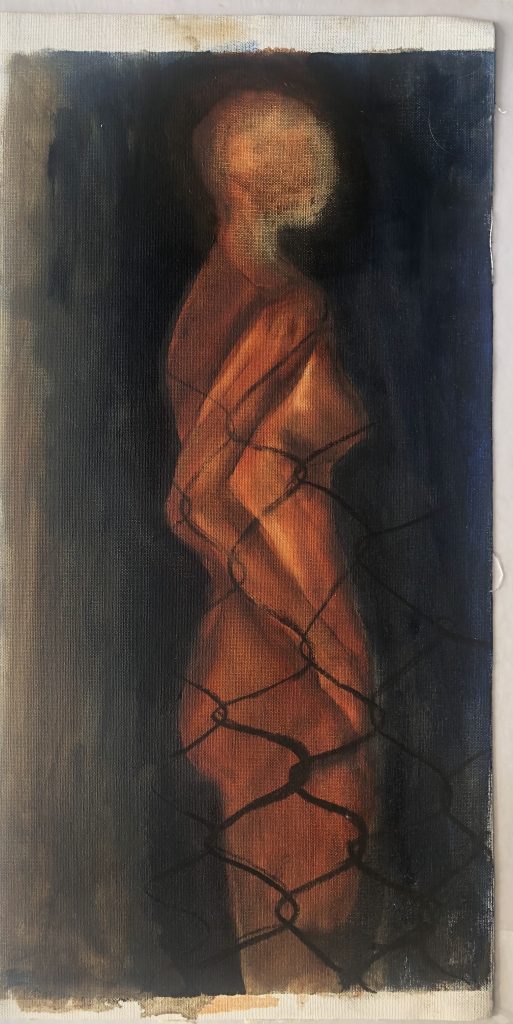
Roland Barthes wrote an essay for a Catalogue Raisonné of Twombly’s drawings in 1979 when it was exhibited at the Pompidou Centre, Paris. I found a pdf (copy)to read on SCRBD called, Cy Twombly: Works on Paper. (p 157 – 176) Here Barthes states that he views Twombly’s writings as the ‘voice’ of the artist:”….he writes: “Cy Twombly has his own way of saying that the essence of writing is neither a form nor a usage but only as gesture, the gesture which produced it but permitting it to linger: a blur, almost a blotch, a negligence”. (SCRBD:158) By looking at the work of Cy Twombly I found fragmented lines of poetry and the artist’s reflection on it by using repetition and being more intuitive, almost as if the drawings are the thinking – his gestures become the work. I learnt from his work that I can enjoy marks as the work. Below are examples of work I did being inspired by CY Twombly’s thinking and process. I made timed studies of sounds I was listening to working mostly with charcoal or soft graphite (B4)

Fig. 17 sound drawing 
Fig. 18 sound drawing 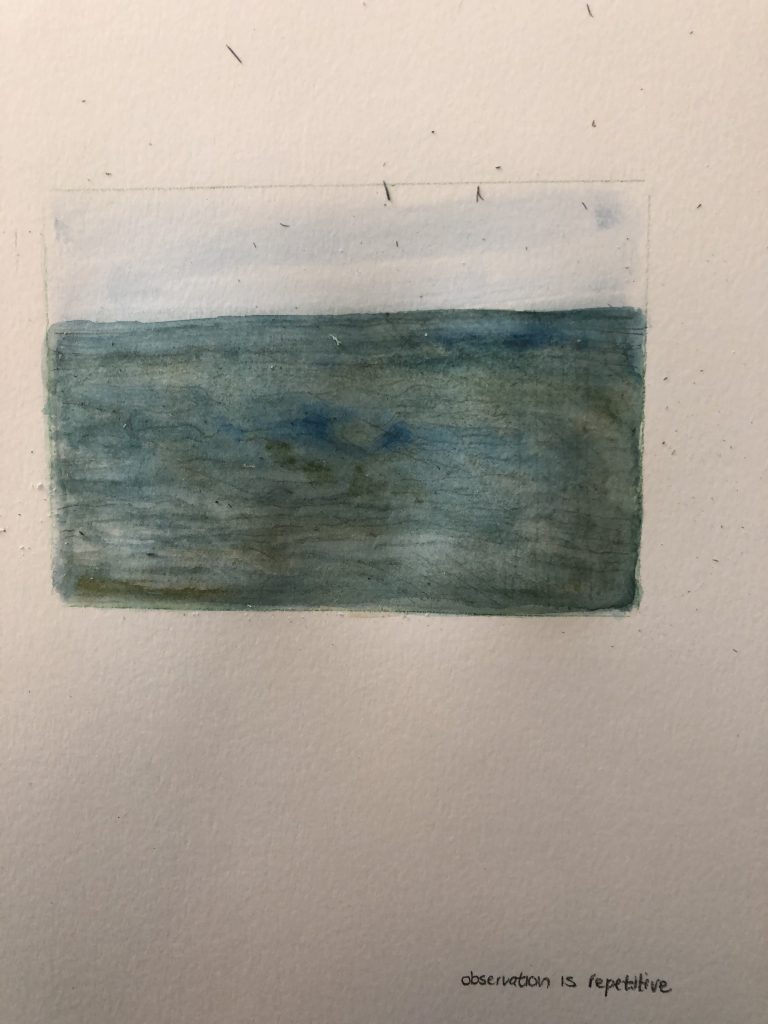
Fig. 19 lines to remind of the beach 
Fig. 20 Writing marks 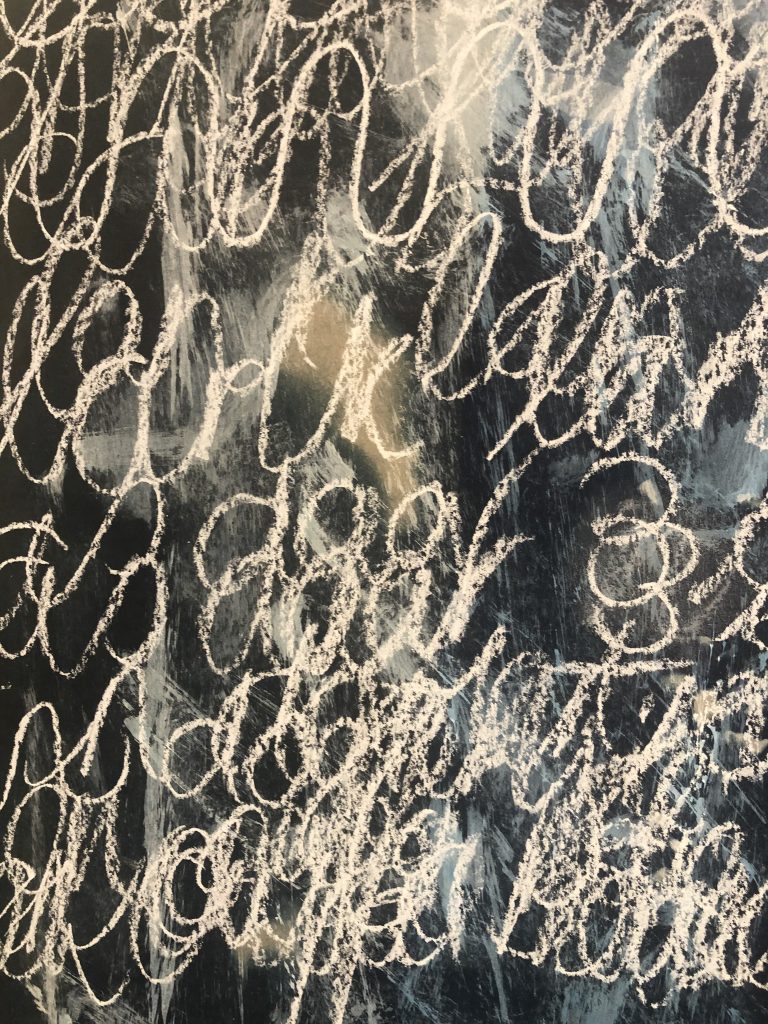
Fig 21 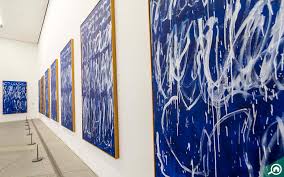
Fig 22 Cy Twombly work I saw in the Louvre, Abu Dhabi 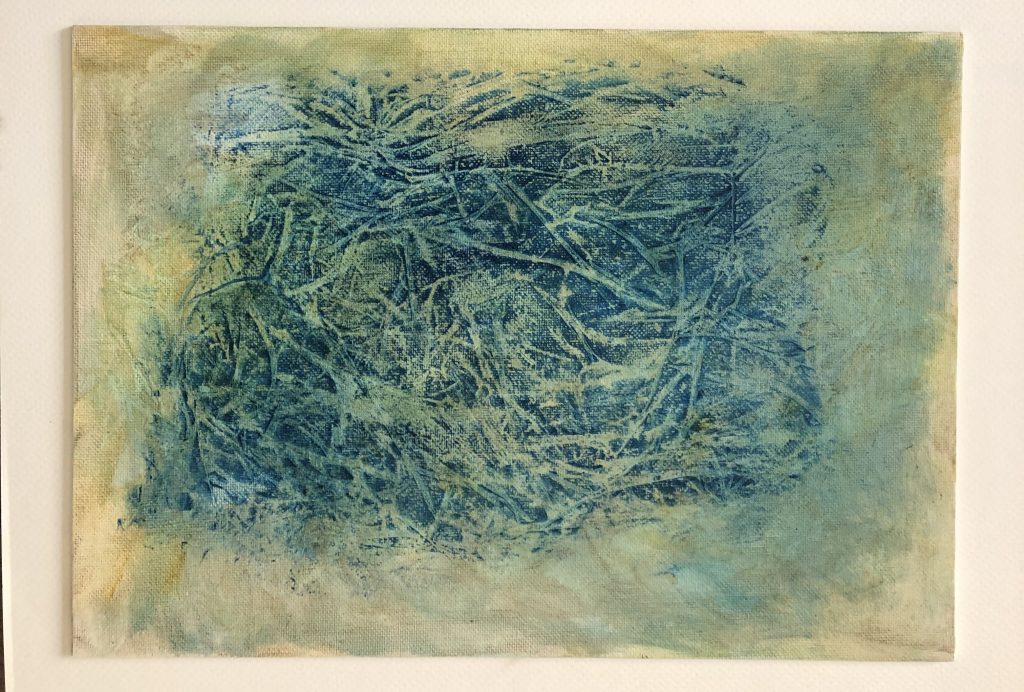
Fig 23 CW Stander mark-making of beach founds – seagrass
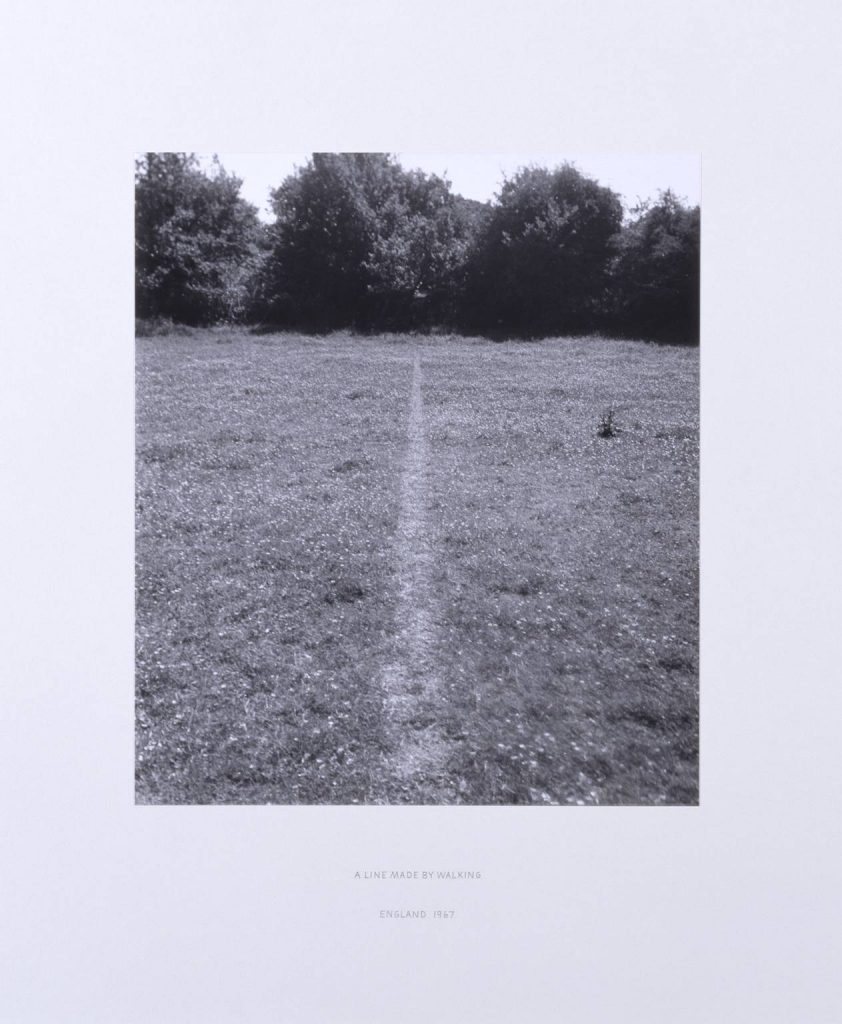
WALKING:A DOCUMENTING WORK PROCESS
In their initial research about walking and art, the Dadaist conducted walking as an avant-garde attempt to experience place and movement and was considered as an important moment in the development of walking as an artistic practice. Catherine Baker, when she discussed her ideas that walking or the movement can in itself be a drawing of lines in space, relates to Richard Long and Hamish Fulton as artists who made drawings that became the outcome of their thinking.(Baker,2010) I am in agreement with her when she writes that this alludes to “aligning drawing with thinking rather than with representing the appearance of objects”. (Baker,2010) Both these artists use walking as art-making practice. In my own making, I was by now attempting to follow a similar process. Longs’ first work, A Line Made by Walking, 1967, ( see figure 24 above) can be seen as ephemeral, out of this he developed work about tracing or tracking land he was engaging with. One can come to a conclusion that the earth does give us a ground to be marked, traced, etched by the body itself. Here I am also thinking of work I viewed by artist, Ilana Halperin, who said about her work process around geological phenomena:” Drawing is a trace fossil of a moment, an idea, proof of life. We make contact. Movement through space and time, layers of thought (material) accumulate.…” ( McKenzie,2015) The Walking performances of artist Hamish Fulton helped to understand the theoretical context of repetitiveness and experience of art/walk. Fulton suggested this flow of influences which happens during a walk, should be ‘from nature to me, not from me to nature’ (Artdaily)
Thinking about physical movements of the body as drawing invisible lines in space is not so unrealistic to think of in this context.
CONCLUSION
Over this period I have discovered that my making is not so much about a subject than it is about actions. I came to the conclusion that learning lies in the experience of making and that failures are a space for learning – It was necessary to learn to let go of ideas of the final product as an assignment and critique of work, as the value could be found in doing daily work and exploring media through creative impulses and by not having limits of time and expected outcomes which drove a particular mode of work. It is becoming clear that my walking is a form of documenting as well as learning a different way of looking at my surroundings and being open to how I relate and experience place, and actions of embodied drawing seem to be growing through mark making and trace. I would like to continue with this project and consider addressing my making as a form of documentation and reiteration which is non-linguistic.
By walking, the movement becomes an essential mode of dynamic interaction between self and other, self and world. For me, this affirms within the art context how the outcome is not always the focus, but the process. Walking became my way of being visible and seeing myself as taking up public space and take the liberties to create my own landscapes. Rebecca Solnit (2001) states so eloquently in Wanderlust: A History of Walking :
“Many people nowadays live in a series of interiors — home, car, gym, office, shops — disconnected from each other. On foot everything stays connected, for while walking one occupies the spaces between those interiors in the same way one occupies those interiors. One lives in the whole world rather than in interiors built up against it.”
Moving forward I think it necessary to consider how the fragmented works I produced could translate into a more developed body of work; in a narrower and deeper way. Consideration is given to developing video documentation and soundscapes. I believe there is scope for the development of the project from an ethnographer position. Making workaround fragments comes naturally in my thinking. My practice is rooted in the everyday and seems important for my own authentic making.
REFERENCES
List of illustrations
Fig.1 Stander, CW. (2020)Landscape. [ink on vellum] In possession of: the author.
Fig. 2 Stander, CW. (2020)Line.[charcoal in sketchbook] In possession of: the author.
Fig. 3 Stander,CW. (2020) Map of a walk.[vellum and ink] In possession of: the author.
Fig. 4 Stander, CW. (2020)Meditative drawing [charcoal in sketchbook] In possession of: the author.
Fig. 5 Stander, CW. (2020) Red repeating. [ink on Japanese Rice Paper] In possession of: the author.
Fig. 6 Stander,CW. (2020) Mapping. [charcoal on Japanese Rice Paper]. In possession of: the author.
Fig. 7 Stander, CW. (2020)Appropriate Lines. [pen on Japanese Rice Paper] In possession of: the author.
Fig. 8. Stander, CW. (2020)Shadow lines. [charcoal on pape]. In possession of: the author.
Fig. 9 Stander, CW. (2020) Cut-out. [velum paper cuttings]. In possession of: the author.
Fig. 10 and 11 Harb, Hazem. (2019) Mixed media work [Artist website] https://hazemharb.com (Accessed on 4 January 201).
Fig. 12 Kentridge William. (1998) Johannesburg 2nd greatest city after Paris. [Photograph] In: William Kentridge, p15.
Fig.13 Stander,CW. (2021) Gazing at ..[Charcoal on paper] In possession of: the author.
Fig. 14 Stander, CW. (2020) Untitled [drawing, charcoal] In possession of: the author.
Fig. 15 Stander, CW. (2020) Untitled [painting] In possession of: the author.
Fig. 16 Stander, CW. (2020) Untitled [painting] In possession of: the author.
Fig17 -18 Stander, CW. (2021) Untitled [timed sound drawings] In possession of: the author.
Fig. 19 Stander, CW. (2021) The sea. [painting] In possession of: the author.
Fig. 20-21 Stander, CW. (2020)After Cy. [mark-making and drawing, mixed media] In possession of: the author.
Fig. 22 Twombly, Cy. (2008) Untitled I-IX. [Exhibition,permanent collection] AbuDhabi: Louvre.
Fig.23 Stander CW. (2020) Seagrass [mark-making frothing with seagrass and paint] In possession of: the author.
Fig. 24. Long, Richard. (1967) A Line Made by Walking [photograph] At: http://www.tate.org.uk/art/work/P07149 (accessed on 8 April 2021).
Bibliography
Andrews, Kerri,(2001) Wanderers: a history of Women Walking. London: Granta Publications, Kindle edition
Artdaily 2003, Hamish Fulton – Placing One Foot In Front Of The Other, published online on https://artdaily.cc/news/3087/Hamish-Fulton—Placing-One-Foot-In-Front-Of-The-Other#.YIgM7i8RrLY. (Accessed on 8 April 2021)
Baker, Catherine, (2010) Studies in Material Thinking, http:///www.materialthinking.org Vol. 4 (September 2010), ISSN 1177-6234, AUT University Copyright © Studies in Material Thinking and the author. Accessed online on 5 April 2021 at https://www.materialthinking.org/sites/default/files/papers/CatherineBaker.pd
Chen, Nancy N, (1992) A conversation with Trinh T MInh ha. [pdf downloaded] on https://docfilmhist.files.wordpress.com/2008/09/chen.pdf (accessed on 4 February 2021)
McKenzie, J. (2015) Ilana Halperin: Drawing is a trace fossil of a momenta idea, proof of life. [Online article] On https://www.studiointernational.com/index.php/ilana-halperin-interview-geological-phenomena-volcanoes-drawing-photography-gallstones (accessed on 4 Feb 2021).
Piciotto, B. (2019) A New Materialist Rhetoric: Theorizing Movement from a Rhetorical Ethnography of Hiking, 2019 Accessed online on 20 March 2021 at https://digitalcommons.library.umaine.edu/cgi/viewcontent.cgi?article=4129&context=etd (accessed on 1 March 2021)
Scribd, Barthes on Cy Twombly pdf (20p )uploaded by floating bridge and released on 3 May 2012
Solnit,Rebecca, (1990) Wanderlust: A history Walking, Kindle edition Text Quote: https://a.co/jjeklgU
Stander, CW. (2021) Video assemblage https://youtu.be/OHQ-NJ1K-PY
